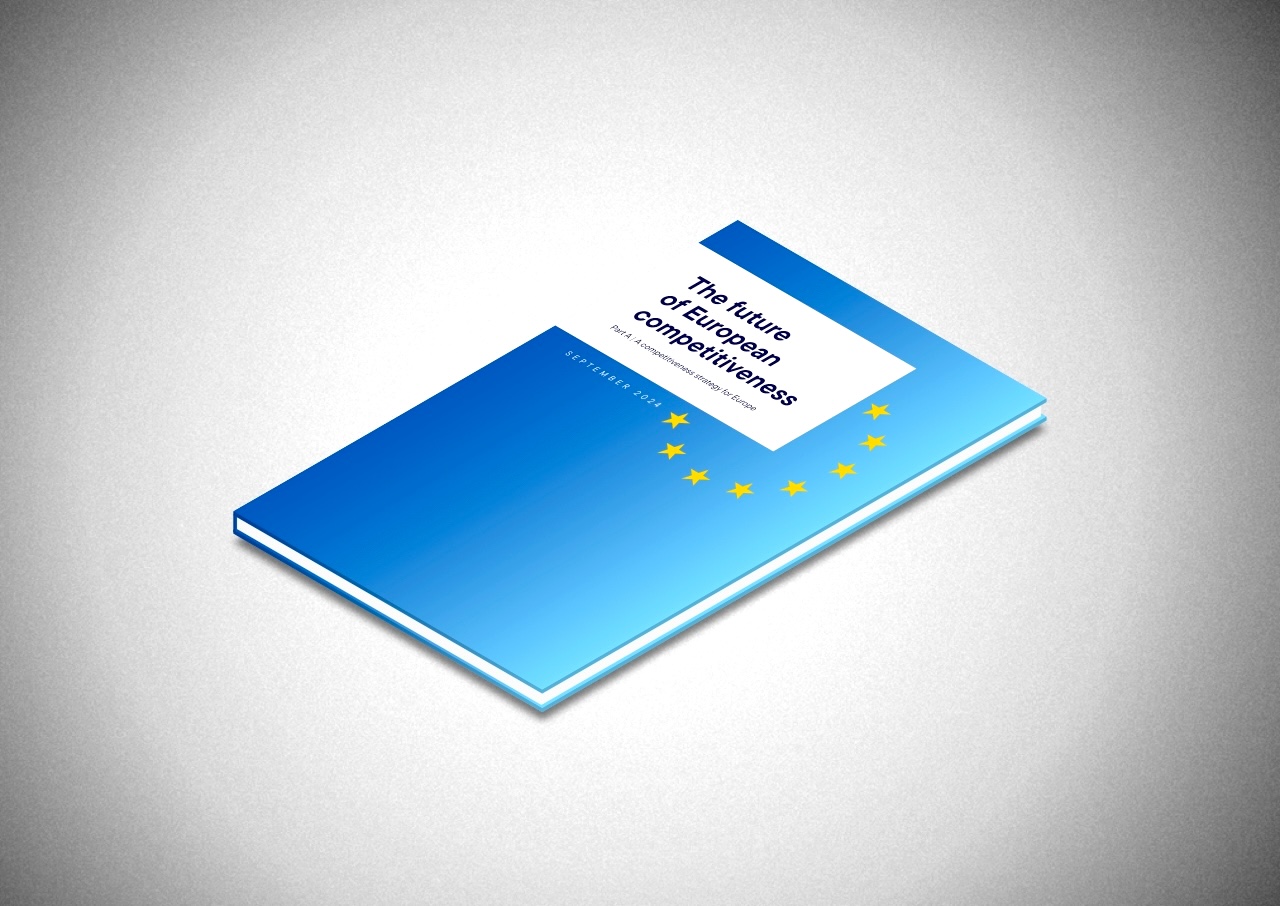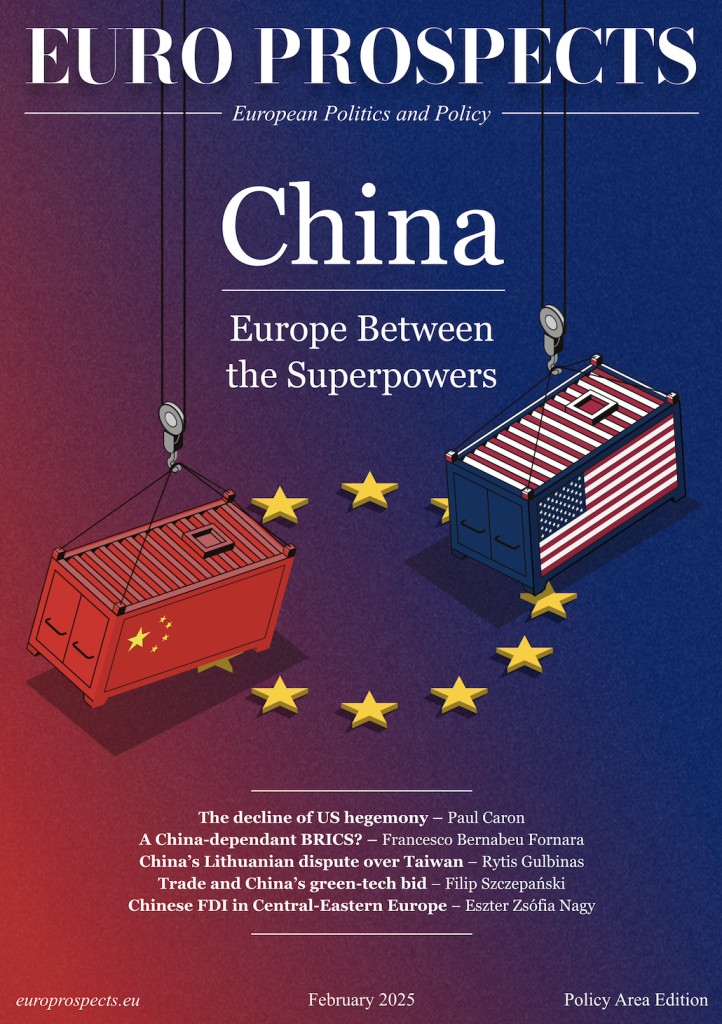
12 min read — EU | Economy | Commission | Policy
Draghi's Report and the EU Response: Year to Date

By Max Berre — Finance Correspondent
Edited/Reviewed by: Nuno Dias Pereira and Francesco Bernabeu Fornara
November 4, 2025 | 10:00
In response to former ECB chief Mario Draghi’s famous 2024 September report on European Competitiveness focused on catching Europe’s economy up, the EU began 2025 by launching the Competitiveness Compass—a strategic framework aimed at boosting EU innovation and growth. It has become a response which despite early successes, has not been without its major headwinds.
Launched last September, the two-part, 390-page, 383-recommendation Draghi report, titled “The Future of European Competitiveness”, focuses on three core policy areas, presenting a 10-industry battery of sectoral policy recommendations, alongside several cross-sectoral horizontal recommendations aimed at growing and expanding productivity across the European Single-Market’s economy.
Among the core policy areas, Draghi focused on: (1) innovation, where Draghi identifies a substantial innovation-gap; (2) decarbonization, where the need for EU-wide coherence regarding industrial policies is essential and where seizing the initiative is imperative, in the face of global competition; and (2) strategic-resource, energy and supply-chain independence to support both defense and sustainable growth.
Draghi’s three main obstacles
The three primary obstacles identified by Draghi relate to expected bottlenecks in implementation.
First, problems of focus and consistency risk undermining the focus on Europe’s innovation gap. Such problems apply at both the EU and member-state level, given that regulatory-burdens impacting SMEs and startups that continue to face near-insurmountable burdens, as well as fragmented capital markets, business investment, and R&D investments, which remain largely unaddressed.
Secondly comes Draghi’s concern over Europe’s waste of common resources, where the EU has been quite reluctant in leveraging nor taking advantage of Europe’s substantial spending power as the world’s largest single market, which Draghi describes as being diluted across multiple national and EU-level instruments.
Third comes Europe’s lack of coordination, which impacts both EU and member-state industrial policy not to mention lengthy EU legislation timeframes and fragmented foreign policy objectives.
The need for the study became apparent, as the EU’s economic growth and recovery figures have lagged behind those of the world’s other major economies since the 2008 Global Financial Crisis. Indeed, EU growth figures are lagging behind those of the US since 2009, and falling-short of re-establishing sustainable post-pandemic GDP-growth, after the initial 2021 GDP-rebound experienced by both economies.
Given that much of this growth has come from the digitalization of the economy, the value-added coming from the ICT-sector, in particular, has played a key role, with core STEM-field-related human resources concentrated in urban France, Germany, and Benelux regions.
Competitiveness Compass: The EU’s response
Launched in January, the EU began 2025 by unveiling the EU Competitiveness Compass, Europe’s comprehensive policy response to the Draghi report, aimed at closing the innovation gap, decarbonizing Europe’s economy, and reducing Europe’s strategic economic dependencies in areas such as energy, foodstuffs, and raw materials.
Essentially, these goals were set to be attained by focusing on both supporting startup innovation via dedicated EU startup strategy and by supporting development and adoption of new technologies—ranging from AI to biotech, to space technologies. It sought to address the innovation gap, by presenting action plans for energy-intensive sectors, while proposing a Clean Industrial Deal to address decarbonization. Externally, it pursued the diversification and improvement of procurement, trade, and investment partnerships in order to reduce strategic resource dependencies.
One year on, results have so far been slow to materialize, with GDP growth trailing slightly behind both the US and UK, as well as the OECD average, while Europe continues to lag in terms of investment in key technologies, compared to US capital markets, as well as to Beijing’s mobilization of public resources. Europe’s VC landscape meanwhile, has yet to surpass its 2022 VC investment peak, while Europe’s VC-industry dry-powder—committed and deployed but heretofore un-invested capital—is substantial, but unevenly-deployed across the EU’s various economic regions. This accumulation of dry powder distances the VC industry from immediate sensitivity to market-conditions, as it provides scaffolding allowing the VC industry to bridge the gap between booms and busts.
On the innovation front, the 2025 European Innovation Scoreboard shows the EU’s innovation performance dipped slightly compared to 2024, eating into post-2018 innovation gains, while harmonization of capital markets and entrepreneurial finance landscape—which Draghi identifies as a key need—is still ongoing. In fact, a recent Deutsche Bank report outlined that while the EU has taken action where member-state interests align, innovation remains Europe’s primary challenge.
On the decarbonization front meanwhile, the 2025 IEA World Energy Investment Report describes that this year saw record highs for low-carbon energy generation and investment, led by China (whose investments totaled over $620 billion), which substantially outpaced fossil-fuel energy investment at the global level, with the US facing investment bottlenecks and the EU facing harmonization bottlenecks. US and EU clean energy investments totalled $400 billion and $386 billion respectively.
Europe, whose economy stands to gain substantially from decarbonization of not only its energy landscape, but also its transit landscape, as described by Cambridge Econometrics, continues to see renewable energy investment bottlenecks surrounding regulation, harmonization, and grid integration issues. Stated otherwise, while some headway can be measured, the issues outlined by Draghi last year continue to pose an obstacle to Europe on this front as well.
Lastly, when it comes to strategic dependencies, the areas of focus, such as energy, AI infrastructure, chips, semiconductions and industrial raw materials, which directly impact the feasibility of both local and domestic innovation and local energy transition remain critical. Nevertheless, major gaps remain in the areas of energy, transit, and Critical raw materials (CRMs) in particular. Meanwhile, a report from the European Court of Auditors describes Europe’s plan to supply 20% of the world’s semiconductor chips by 2030 as ‘essentially aspirational’.
Overall, much progress remains to be made on the Draghi recommendations, with the recent Deutsche Bank report describing that between 11 and 12% of Draghi’s recommendations have thus far been addressed—with the innovation gap identified as being the most urgent issue. While the EU’s InvestAI initiative aims to mobilize around $235 billion for development of AI and AI infrastructure, the EU’s overall response measures to the Draghi report are still in preliminary stages.
Disclaimer: While Euro Prospects encourages open and free discourse, the opinions expressed in this article are those of the author(s) and do not necessarily reflect the official policy or views of Euro Prospects or its editorial board.
Write and publish your own article on Euro Prospects
Subscribe to our newsletter – stay informed when we publish articles on pressing European affairs.

